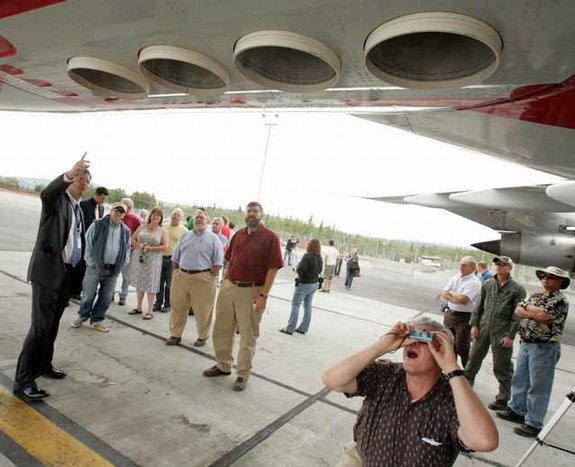
The U. S. Forest Service has said that by 2012 the existing 19 large air tankers currently approved for use by the federal agencies will be either too expensive to maintain or no longer airworthy. The average age of the large air tankers is 50 years old.
Discussions about this have been going on since at least 2005 when Congress directed the USFS to come up with a strategic plan for procuring and managing aircraft for fighting wildfires. But that plan has never seen the light of day.
The new Agriculture Deputy Undersecretary Jay Jensen said the agency is working on the plan and it might be released by the end of the year. Senator Lisa Murkowski (R-Alaska) suggests that the plan should be released by September 30 so that it can be considered when preparing the next fiscal year’s budget.
According to a September 2, 1987 story in the New York Times, during the huge lightning bust in northern California when firefighters were battling hundreds of fires that year, they were assisted by 48 air tankers. In 2002 there were 44. Now we are down to 19, and according to the USFS that number could drop to zero in three years, unless some out-of-the-box decision making occurs.
Inspector General’s report
A report by the Department of Agriculture’s Inspector General assumes the replacement air tankers will have to be purchased, “due to the lack of manufacturers with this type of aircraft willing to lease them at a reasonable rate”. The USFS does actually rent, or lease, their lead planes and some other aircraft, but renting or purchasing air tankers would be a paradigm shift away from the current business plan of exclusive use contracts for the privately owned 50-year old air tanker fleet.
$2.5 billion for new air tankers
The Forest Service has requested $2.5 billion to purchase a fleet of air tankers. The Inspector General’s report said the USFS needs to strengthen its justification for acquiring them. In addition, the report said they should develop a project team to oversee acquisition. The Forest Service replied they would only establish a project team after Congress approves the budget request for the aircraft, while the Inspector General said it should be established immediately.
Some thoughts-
Geeze. If someone is trying to give you $2.5 billion for a new fleet of air tankers, shouldn’t you accept their suggestions? And, what about finishing and releasing that replacement plan that was due in 2005?
The project team for replacing air tankers should have been established in 2002.
What is going on here? Arrogance? Laziness? A lack of accountability? Thinking that if we ignore the problem of aging air tankers it will go away? Yes, the air tankers may go away, but what will replace them?
And is anyone considering a purpose-built large air tanker that could carry at least 3,000 gallons of retardant that could maneuver in and out of canyons? That could take years to design and build. It’s too bad no one saw this problem coming, say, in 2002 when two very old air tankers, a C-130 and a PB4Y, broke apart in mid-air and killed five people.
If smart, proactive, decisive action had occurred then, by 2012 we would have had a shiny new fleet of safe, effective, purpose-built air tankers. But the Forest Service is STILL dragging their feet, seven years later. Maybe “by the end of this year” they will finish a replacement plan that was due in 2005? Can’t we do better than that?
I used to tell my firefighters, when urging them to be fire-ready at all times, “What if there was a fire–right now? Are you ready?” Will the United States be ready for a fire in 2012?







